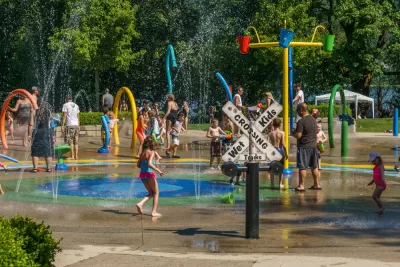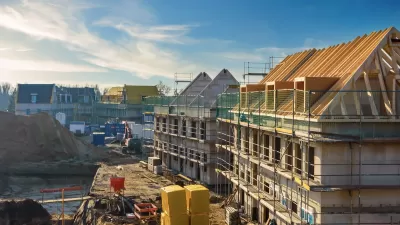There was plenty of good to go with the bad from a year of professional and academic practice in the field of landscape architecture.

Charles A. Birnbaum takes a tour of the year in the field of landscape architecture, noting the big trends in an up and down year for the profession.
Among the highlights of the year: Kate Orff, founder of SCAPE, earned a MacArthur genius grant, a first for the profession. Among examples of the best projects by landscape architecture around the country, Birnbaum explores Longwood Gardens in Kennett Square, Pennsylvania; Centennial Park in Nashville, Tennessee; and an eight-acre addition to the San Antonio Botanical Garden.
Birnbaum is not as kind in assessing a trend that dominated landscape architecture in 2017—what Birnbaum calls "splash pad urbanism." According to Birnbaum, the reliance on splash pads as a one-size-fits-all park amenity raises the question: "are we becoming lazy?—or just willing to accept a little mediocrity in exchange for a planning board’s easy approval (and public buy-in)?" When considering the rise of splash pad urbanism, and its implications, recall also the term "bouncy house urbanism," coined by Los Angeles Times Architecture Critic Christopher Hawthorne. It seems there's a lowest common denominator available for every age bracket.
Also concerning Birnbaum is the ongoing threat to open space, which includes the Trump Administration's unprecedented decisions to shrink national monuments, but also the decision to site the Obama Presidential Center in Jackson Park, Chicago.
FULL STORY: “Splash Pad Urbanism” and 2017’s other notable developments in landscape architecture.

Maui's Vacation Rental Debate Turns Ugly
Verbal attacks, misinformation campaigns and fistfights plague a high-stakes debate to convert thousands of vacation rentals into long-term housing.

Planetizen Federal Action Tracker
A weekly monitor of how Trump’s orders and actions are impacting planners and planning in America.

San Francisco Suspends Traffic Calming Amidst Record Deaths
Citing “a challenging fiscal landscape,” the city will cease the program on the heels of 42 traffic deaths, including 24 pedestrians.

Defunct Pittsburgh Power Plant to Become Residential Tower
A decommissioned steam heat plant will be redeveloped into almost 100 affordable housing units.

Trump Prompts Restructuring of Transportation Research Board in “Unprecedented Overreach”
The TRB has eliminated more than half of its committees including those focused on climate, equity, and cities.

Amtrak Rolls Out New Orleans to Alabama “Mardi Gras” Train
The new service will operate morning and evening departures between Mobile and New Orleans.
Urban Design for Planners 1: Software Tools
This six-course series explores essential urban design concepts using open source software and equips planners with the tools they need to participate fully in the urban design process.
Planning for Universal Design
Learn the tools for implementing Universal Design in planning regulations.
Heyer Gruel & Associates PA
JM Goldson LLC
Custer County Colorado
City of Camden Redevelopment Agency
City of Astoria
Transportation Research & Education Center (TREC) at Portland State University
Jefferson Parish Government
Camden Redevelopment Agency
City of Claremont





























